Up Helly Aa: What happens at Shetland's Viking fire festival?
- Published
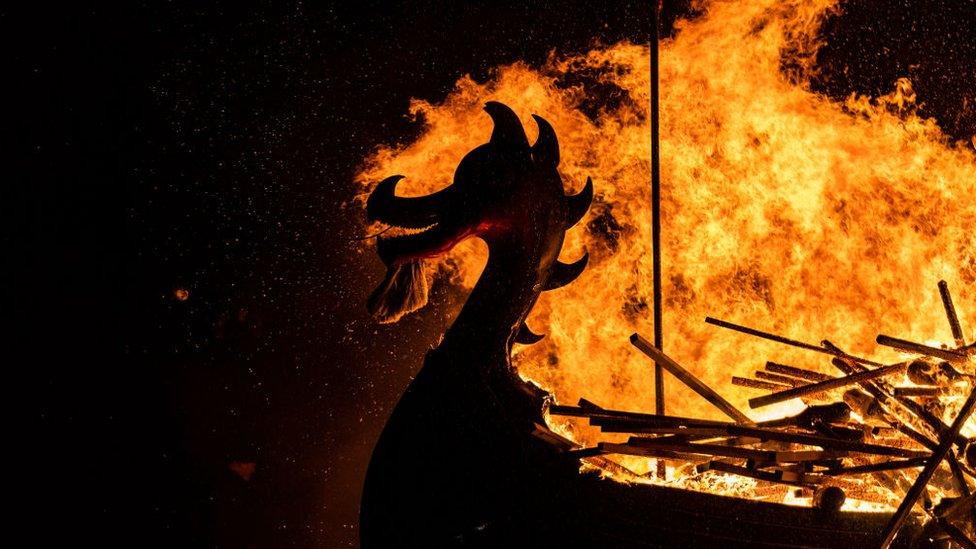
The festival reaches its climax with the burning of a Viking galley
Shetland's biggest and most spectacular Up Helly Aa Viking fire festival is taking place in the capital Lerwick.
It is one of 12 celebrating the islands' Norse heritage, culminating in the burning of a replica Viking galley.
Up Helly Aa is held on the last Tuesday of every January in Lerwick, the main town in the island group.
For the first time in the event's 143-year-old history, women and girls will join the main "squad" at the head of the procession through the town.
Up Helly Aa 2024 Live Stream
This year BBC iPlayer will be streaming the festivities for the first time.
Look back on the event, which was streamed live on the BBC News Website.
What happens on the day?
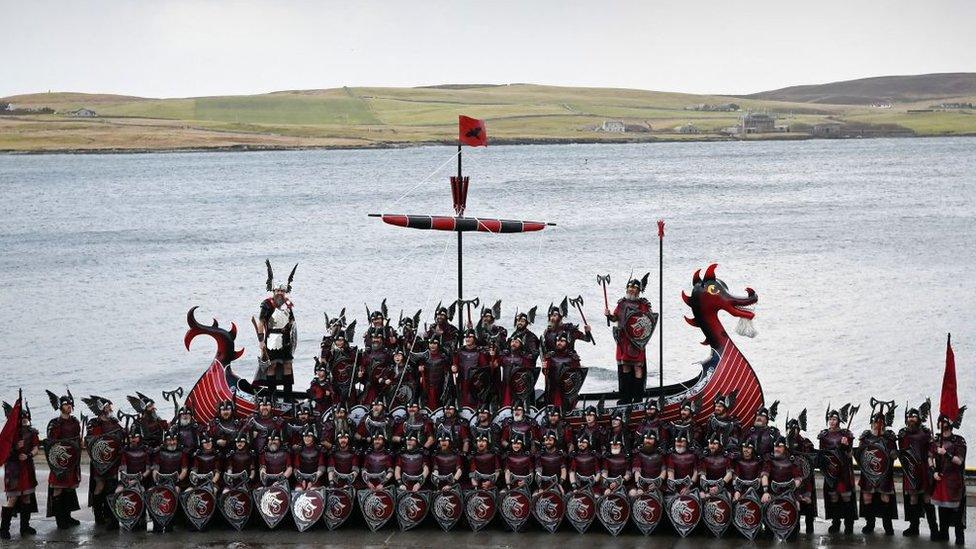
The day begins with the Jarl Squad taking the galley through the town
The 12 Up Helly Aas are held across Shetland between January and March, though Lerwick's is the biggest and most spectacular.
Fire festivals celebrate the islands' Viking past with communities coming together for a night of "guizing" (dressing up), burning torches through the streets and enjoying traditional Shetland music.
The preparations are done in strict secrecy, with the revelation of the Guizer Jarl's outfit and what Norse character he will represent being revealed on the day.
The festival begins in the morning when the Guizer Jarl leads his squad through the town, dragging the replica galley and singing the Up Helly Aa and galley songs.
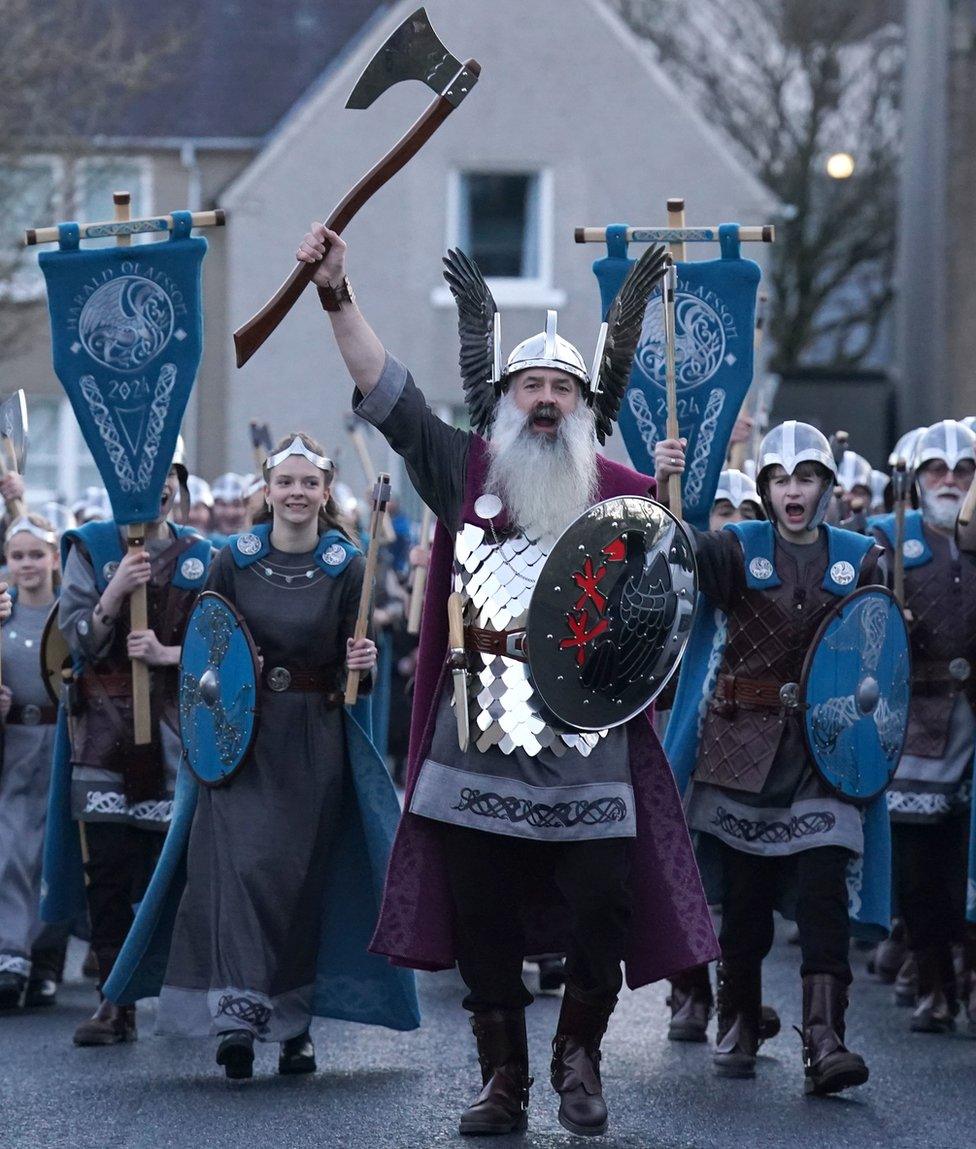
Guizer Jarl Richard Moar is joined in his squad by his teenage daughter Jenna and three nieces
They then begin a day of civic receptions and visits to schools, hospitals and homes.
The festival is organised by volunteers and is run by a committee of 17 members elected by the Guizers, with a new member elected every year. To become Guizer Jarl a member must have served 16 years on the committee.
This year's Guizer Jarl is Richard Moar from a squad known locally as the "Home Furnishing Squad", which has not been the Jarl Squad since 1965.
The 47-year-old engineer has been involved in the festival since 1990 and was elected to the committee in 2008 after two failed attempts.
Now taking his turn as Jarl in 2024, he will be joined in his squad by his teenage daughter Jen and three nieces - the first time there has been female participation in Lerwick's Jarl Squad.
Where does the fire come in?
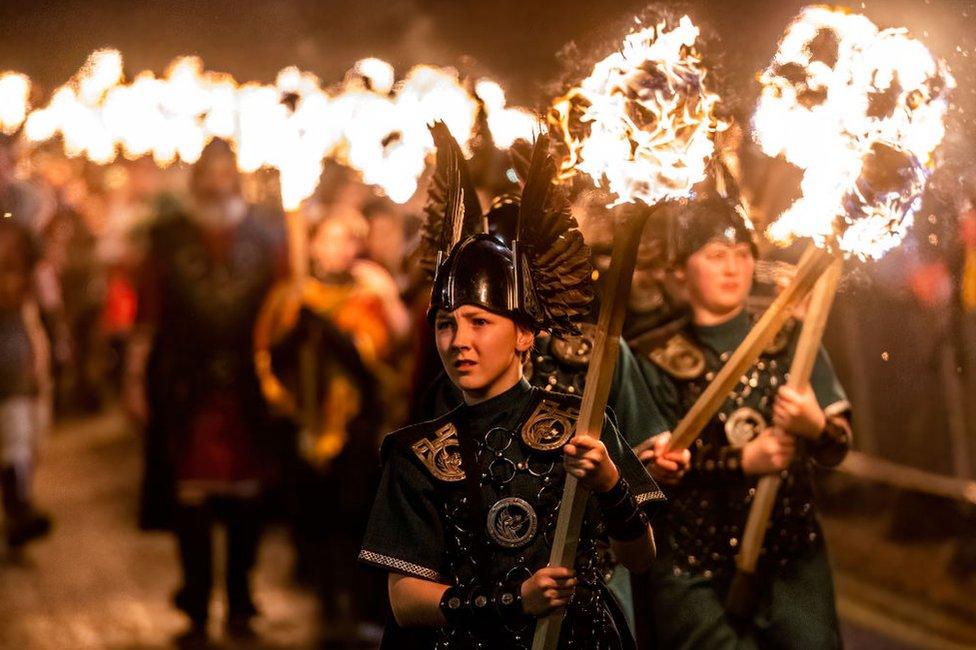
The squads include junior groups for Lerwick's young people
Up Helly Aa (pronounced upp-helli-a') is most famous for its evening procession, which culminates in the burning of the Viking galley.
The Guizer Jarl and his squad begin marching at 19:30, a firework marking the start of the ceremony.
The torches are lit and, accompanied by a brass band, they are joined by 46 other squads in their suits.
Each Guizer carries a fencing post, covered with sacking material soaked in paraffin.
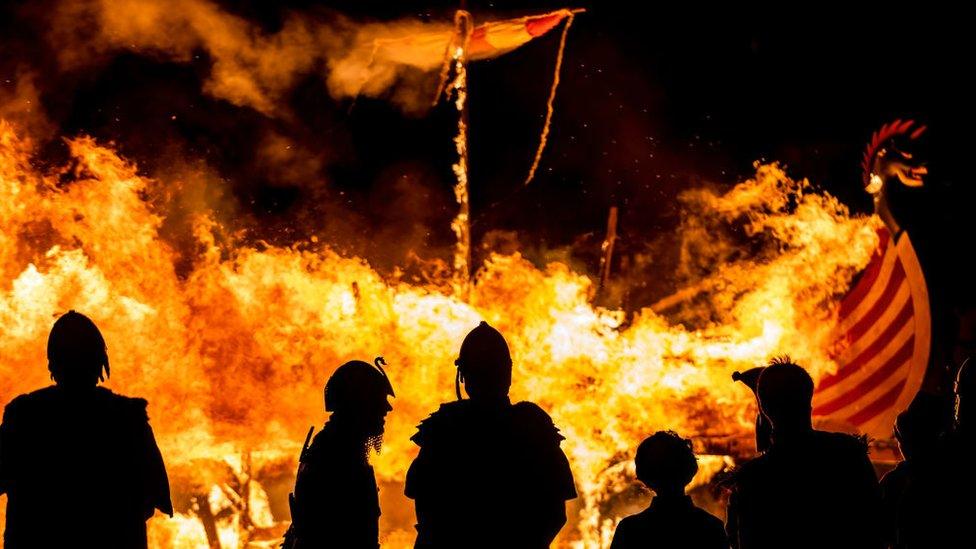
The galley has been built by the squad and its burning marks the end of the festival
It takes half an hour for the Jarl's squad of Vikings to drag him and his ship to the burning site, through a crowd of more than 5,000 spectators.
When they arrive the Jarl leaves his ship. A bugle is sounded and the torches are hurled into the galley.
As the blaze destroys the shipbuilders' work, the crowd sings the song The Norseman's Home.
The invitation-only parties will then go on through the night, with each squad visiting each of them in turn. And just to be sure, the next day is a public holiday in Shetland.
What are the origins of the festival?
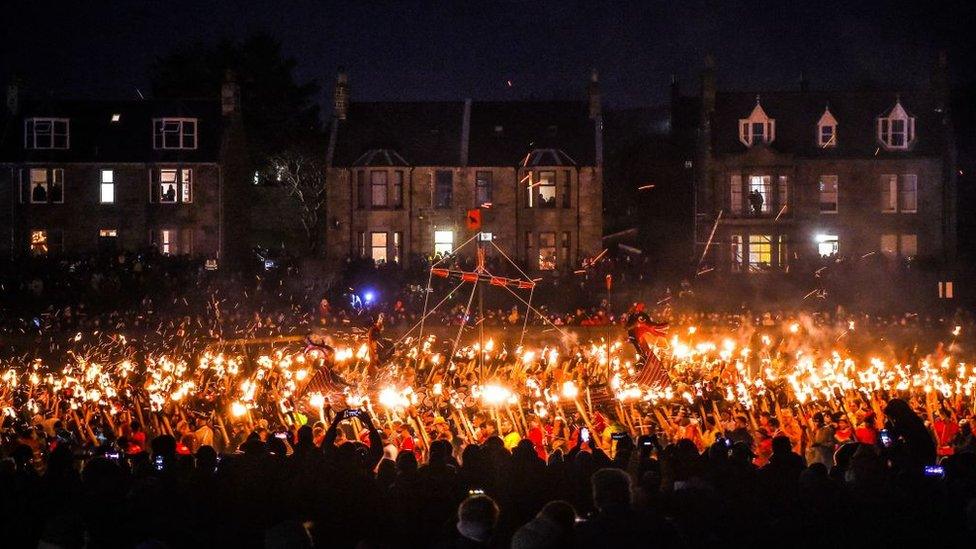
More than 5,000 spectators are expected along the route of the procession
As with many such festivals its origins are somewhat obscure and disparate. It comes at the time of year when the days start to lengthen a little after the long winter, a point in the year commonly marked in pagan societies.
But it also has roots in 19th Century celebrations centred around Christmas and the new year. These took place in January on the old Julian calendar, which Shetland kept until 1879.
Locals were also said to enjoy rolling barrels of lit tar through the town, a habit banned in 1874.
These elements were brought together by 1881, when today's festival is said to have started.
Since then, only world war, the death of a king and the Covid-19 pandemic have stopped the festival from taking place.

Jen Moar is one of the first female Jarl squad members at the Lerwick festival
What role do women have in Up Helly Aa?
Women and girls are now able to fully take part in the Lerwick event, following the modernisation of other fire festivals in Shetland.
Lesley Simpson made history when she led a mixed-sex procession of Viking warriors in the South Mainland Up Helly Aa festival in 2015.
The abolition of gender restrictions began in Lerwick last year, when women and girls first took part in the procession.
The move to open up the procession to all follows a campaign dating back to the 1980s.
Women had been traditionally restricted to participating as "hostesses", a role which involved organising the parties which take place in community halls across the Shetland capital.
In 2024, for the first time, women and girls will join the main Jarl squad
Four young women wearing full Viking dress will form part of the lead group at the head of the procession through the town.
It is an important change to the event, but with a 16-year service required on the Up Helly Aa committee before taking the lead role, it will be some time before Lerwick gets its first female Jarl.